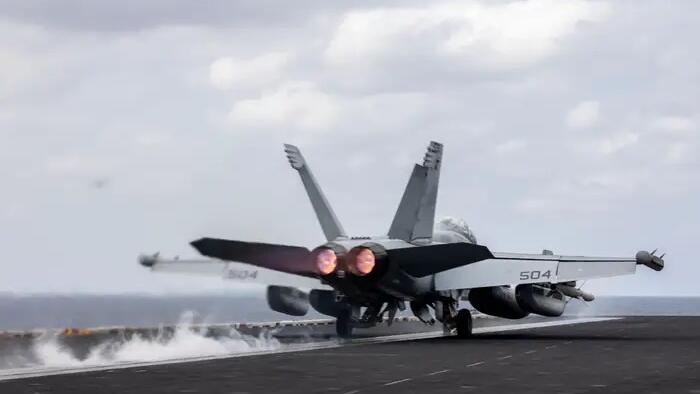In a troubling incident that highlights the precarious nature of military operations in the volatile Middle East, two U.S. Navy pilots were shot down over the Red Sea early Sunday morning, resulting in a friendly fire situation involving their own forces. This incident follows over a year of continuous conflict wherein Yemeni Houthi rebels have targeted international shipping and military operations in the region. Despite the persistent threat from Houthi drones and missiles, which have repeatedly endangered coalition ships, this is the first known case of an American fighter jet being shot down during the conflict. The incident underscores the chaotic reality of combat operations in environments where multiple parties are engaged and the stakes are extraordinarily high.
Initial reports confirmed that the pilots successfully ejected from their F/A-18 fighter and were rescued from the Red Sea, albeit with one of the pilots suffering minor injuries during the ordeal. The cause of the incident was identified by U.S. Central Command (CENTCOM) as an accidental engagement by the USS Gettysburg, a guided-missile cruiser that is part of the USS Harry S. Truman Carrier Strike Group. This misidentification is particularly shocking considering the struck aircraft had only recently launched from the same carrier. CENTCOM has since stated that it is investigating the incident further, aiming to understand how such a severe miscalculation could occur within their operational parameters.
As the U.S. military was conducting airstrikes against Houthi positions in Yemen at the time of the incident, it is suggested that heightened tensions and rapid reactions contributed to the trigger-happy atmosphere that led to the downing of the American fighter. Reports indicate that prior to the incident, Houthi forces had launched drones and a cruise missile targeting U.S. assets in the area. The rapid pace of engagements and complicated relationships on the battlefield may have led to the cruiser misidentifying the F/A-18 as a hostile vehicle, highlighting the confusion that can occur in high-stakes military confrontations.
The broader implications of this incident resonate beyond the immediate mishap. For the Pentagon, the friendly fire incident is a profound embarrassment, raising questions about operational protocols and the realities of battlefield awareness. Positive news for the Iranian-backed Houthis, who could celebrate this error as a symbolic victory over American military might, illustrates the shifting dynamics at play in the region. The incident serves to emphasize the operational challenges facing coalition forces, as they navigate a landscape rife with miscommunication and hostility.
Importantly, this accident has spotlighted the reliance on technology and situational awareness in modern warfare. Within moments, defensive systems can dictate attack orders based on perceived threats, resulting in catastrophic decisions when systems malfunction or misidentification occurs. As CENTCOM investigates the exact circumstances surrounding this incident, understanding the role of technology in altering battlefield dynamics and decision-making processes will be critical for improving safety protocols and operational readiness.
In summary, the downing of the U.S. Navy fighter over the Red Sea due to friendly fire represents a serious lapse in military operations amidst ongoing conflicts. It brings into sharp focus the challenges U.S. and allied forces face against both external threats and internal miscommunications. With investigations underway, military leaders will be tasked with ensuring that lessons learned from this incident inform future operations in conflict zones, aiming to mitigate the risks associated with the complexities of modern warfare. This incident reaffirms the necessity for enhanced training, clearer communication, and more accurate identification protocols to prevent similar occurrences in the future.

